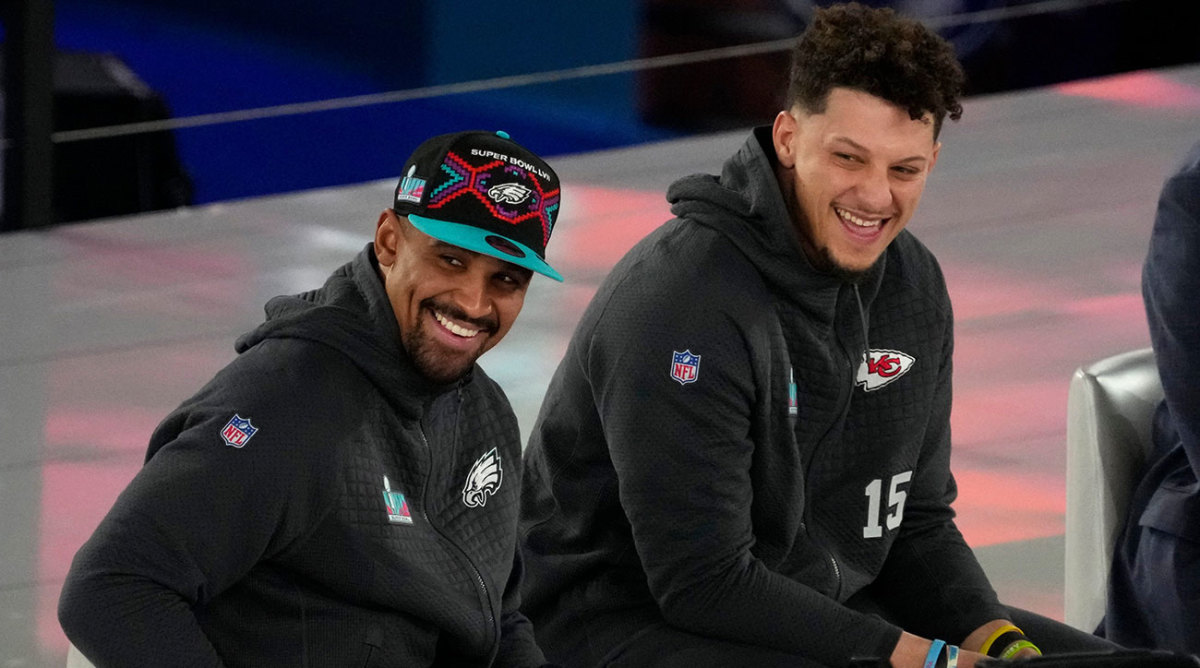Separating Fact From Fiction Over How the NFL Salary Cap Works

As we move toward the closest thing the NFL has to a true offseason, I thought it would be a good time to separate some fact from fiction about that amorphous thing called the salary cap. There is nothing in the massive machine of NFL information and coverage that is more misrepresented, misdiagnosed and often misinformed than discussion around the cap. Let’s examine what it is and, more importantly, what it isn’t through a few myths, with the theme being: It’s the cash, stupid, not the cap.
Myth No. 1: Cap matters as much as, or even more than, cash
No.

Let’s make this very simple: Cash is real money; cap is simply accounting.
Cash is what a player will actually receive in a contract. Cap is a mechanism of compliance, a way NFL teams account for a contract over the life of the deal.
And through the NFL’s systematic magic of signing and option bonus proration—spreading out the cap impact of bonuses over the term of the deal—cap can be adjusted to provide short-term gain for long-term pain.
In analyzing a player contract or a team payroll, many fans (and even media) focus on cap impacts. I am here to tell you to stop doing that. What matters is the cash, not the cap. Cash is real money in and real money out. Cap is simply bookkeeping. Even dead money—leftover nonroster charges for players no longer with the team—is merely unamortized proration clogging up the pipes of the overall cap. It is not cash.
When I was negotiating contracts on the team side for many years, I would have agents start to tell me how they could make our deal cap-friendly. I would cut them off. “I’m going to stop you right there,” I would say. “Our cap is none of your concern. I am paid quite well to manage and handle our cap. I’ll worry about that; you worry about your player. Are we clear?”
NFL teams have (now several) people paid to manage their cap books. They may choose management strategies that are team-friendly early and team-unfriendly late or more balanced. Cap can be easily moved around by a first-year NFL cap manager as much as an experienced one. The point is that it can be managed. The key for me as a negotiator, and an analyst, is always the same: What’s the cash? Year 1? The first three years? The first four years? And on and on.
Cash matters a lot more than cap.
Myth No. 2: Elite players should take less to “help the team win”
No.
Less cap? Sure. Less cash? No.
If top players, especially quarterbacks, want to facilitate the signing of other important players on the team—we can debate whether that is their role, but even if we allow for it—there is a way they can easily do that, and hundreds of players have. They can simply do a cap restructure of their contracts: converting their large salaries into signing bonuses, thereby pushing out cap charges into the future years through proration. These are cap restructures done by every team in the NFL. The player receives the exact same money he was scheduled to receive, sometimes even with better cash flow and an earlier payment schedule.
So, you ask, what is the myth? Well, the myth is that a player needs to take less cash—not just cap—to help the team. There are fans, media and, unfortunately, even players who believe this, and it is wrong.
Taking less cash only hurts the player and helps the owner, who is paying less than he should. NFL owners all have assets worth over $2 billion; they do not need players to sacrifice any cash in their contracts. It is quite enough for players to help the team to provide more cap; they certainly do not provide them more cash.
Two players come to mind immediately. I have talked often about Tom Brady and the Patriots over the years. He not only did several cap restructures, but for some reason (there are many theories), he also took less cash compared to other top-echelon quarterbacks from those days. And the Patriots (1) did not need the cash and (2) were a mid-to-low payroll team throughout those years.
The present-day comparable is Patrick Mahomes, owner of a ridiculously long and highly undervalued contract. Mahomes, whose contract was under market soon after he signed it and locked himself in for 12 years, talks often about helping the team sign other players. To Patrick: Cap restructures do that; do not sacrifice your cash earnings!
So when you read about a player saying he “took less” to help the team sign other players, know that he is being bamboozled by the team, or his agent, or the media, or whomever. He can always sacrifice short-term cap, but he is only hurting himself—not the team, not other players—by taking less money.

Myth No. 3: Negotiating a player contract to be a percentage of cap would be workable
No.
This idea has received traction from fans and media in recent years, but it is more a theory than an idea that could work in reality. With all the things discussed above about cap proration and its movability, both agents and teams know that this idea is not workable in the current cap system. Again, while cash is fixed, cap is always changing.
With both new contracts and extensions for top players, most teams go heavy on signing bonus (prorated) and light on salary (not prorated) early in the deal to preserve present cap room as much as possible. Personally, I managed the cap differently, with a “pay as you go” approach that favored a smoothing approach to cap. Some teams do operate that way, but most are playing the future proration game discussed above.
Further, players and agents love the big signing bonus, meaning they will readily accept a low cap number early—with very low cap percentages—and more burdensome cap numbers (and percentages) later.
As an example, in Jalen Hurts’s recent $251 million extension with the Eagles, the first- and second-year cap numbers are $6.15 million and $13.5 million. Those are cap percentages of roughly $2.8% and 5.7%, shockingly low percentages for a star quarterback on a veteran contract. Of course, the cap numbers and percentages rise significantly in later years, but the future structure of the deal also prevents high cap numbers and percentages. The Eagles used a structure with team options that push out cap proration into dummy void years that will never materialize. Thus, the cap percentages for Hurts in this contract are alarmingly low for a player of his stature.
Hurts had extraordinary leverage as MVP runner-up, fresh off winning an NFC championship and in the last year of his contract. Would he have been better served with a more “flat” contract with higher early cap numbers and no prorated signing bonus? We’ll never know, but he and his agent are certainly happy with the deal they made.
Thus, we are back to where we started about the cap.
The only people to whom cap numbers matter are the team and league officials who monitor compliance with it. For everyone else, it’s a shiny object that has no true impact in the business of football. Once again …
Cash is what matters, not cap.
